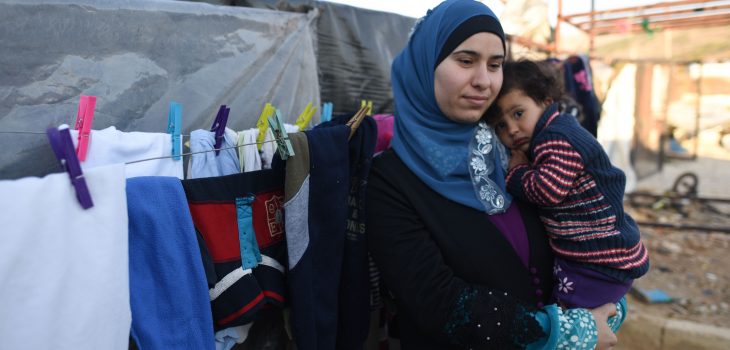By Felicity L Brown (War Child Holland) and Wietse A Tol (University of Copenhagen)
In this blog series we are giving a voice to practitioners, implementers and policy-makers involved in national COVID-19 responses in low- and middle-income countries. These posts seek to facilitate timely cross- learning by sharing opinions, insights and lessons on the challenges and actions taken by those on the COVID-19 front line.
Background
The COVID-19 pandemic will have a significant impact on the mental health of the global population. We expect an increase in general distress, greater incidence of various mental health conditions, and therefore heightened demand and need for mental health services. The mental health burden is worsened by the disruption of mental health services, often due to re-prioritization of health resources. This can impede treatment for people with existing conditions, and for people with re-emergence or exacerbation of symptoms that had previously been well managed. We also expect increased distress among specific groups of individuals, including frontline workers, individuals who have experienced COVID-19, and individuals who have lost loved ones, or lost livelihoods. We can liken this to our experiences working in populations affected by armed conflict or other emergencies- we see an increased risk of distress and disorders, either related to direct exposure to the crisis, or via resultant social, occupational, or financial stressors. Similarly, we see both the emergence of new conditions, and exacerbation of existing ones. These contexts also have another characteristic in common: the dilemma of equitably meeting the dramatically increased need for mental health services at scale, where existing health care systems and resources were not designed to meet this challenge. We briefly outline three innovations from low resource humanitarian settings, including those outlined in a recent Lancet Commission on Global Mental Health, that can be applied globally in responding to the COVID-19 pandemic.
Lesson one: the need to take an integrated, public mental health approach
Within the context of stretched health resources, and greater demand for mental health services, we need to shift towards a public mental health approach. In humanitarian settings, much work has been done to integrate mental health prevention and promotion activities through other sectors. For example, to stem the tide of an increased mental health burden, mental health practitioners can collaborate with gender-based violence and child protection services to understand how the determinants of mental health (e.g., increased intimate partner violence and child abuse) can be addressed in an integrated manner. Another example is the integration of mental health services with infectious disease health services, such has been successfully implemented in relation to HIV treatment in many global settings.
Lesson two: the need to explore low-intensity interventions
We will not have the capacity to provide specialized psychotherapeutic interventions for the vast numbers of people requiring support. Like in low-resource humanitarian settings, we expect to see increased mental health needs, alongside a limited mental health workforce. In the contexts where we work, the scarcity of trained specialists to meet demand has driven innovation in service delivery, towards scalable interventions and stepped care approaches to use resources efficiently. These often involve ‘task-sharing’, whereby non-specialists with limited or no prior mental health training, such as teachers, general practitioners, nurses, or community health workers, can be trained and supervised to deliver psychotherapies in contexts where the limited number and unequal distribution of specialists would otherwise prevent adequate population-level impact. Furthermore, the context demands less resource-intensive treatments, including briefer treatments compared to typical individual psychotherapies. Focus has necessarily shifted towards interventions comprised of the most active therapeutic ingredients, delivered in group or self-help format, sometimes via online or other remote delivery mechanisms, and with an emphasis specifically on building generalizable skills. There is mounting evidence for the acceptability, feasibility, and effectiveness of such treatments in contexts where the limited number and unequal distribution of specialists would otherwise prevent adequate population-level impact. As an example, the Mental Health Gap Action Programme (MhGAP) Intervention Guide has been used in various global settings to briefly train non-specialists, such as primary care physicians, to assess and treat a variety of mental health symptoms in their practice, and refer cases as needed.
Lesson three: the need to explore innovative training and supervision methods
In order to boost the global mental health workforce to meet the expected increased demand for services, it will be infeasible to increase the number of university-trained professionals within limited timelines. With the growing evidence for task-sharing approaches in low-resource humanitarian settings, attention has turned to the best ways for specialists to train and supervise these non-specialist providers. Innovative mental health apprenticeship models have been promoted, whereby discrete, brief, training sessions are supplemented by ‘on the job’ training, and continuous supervision and skills development through mutual problem solving. Experiences from Ghana have indicated that community health workers indicate also the importance of comprehensive, ongoing supervision and support, beyond the training phase. Additionally, advances have been made in practical methods to train and assess competence of non-specialist providers’ core therapeutic skills through brief role-play observations. Such methods have the potential to expand our trained workforces to meet global needs, while ensuring quality.
Summary
In order to meet the global demand for mental health support during the COVID-19 pandemic, and into recovery phases, we will need to develop more sustainable and smarter mental health systems. While it is promising that the mental health aspects of COVID-19 have so-far been prominently highlighted, it is essential that this continues and that we take a public health approach towards the response in order to support mental health and wellbeing at a global scale. Innovations from the humanitarian field are highly relevant to global responses, including attention to prevention and promotion, and thinking through structural changes in the ways that mental health treatments are conceptualized and delivered.
Image credit: ©Hollandse Hoogte
About the authors
Felicity L Brown
Felici ty Brown is a clinical psychologist and senior researcher at War Child Holland, where her work focuses on developing and evaluating effective interventions and implementation models for addressing the mental health and wellbeing of children affected by armed conflict and other adversities.
ty Brown is a clinical psychologist and senior researcher at War Child Holland, where her work focuses on developing and evaluating effective interventions and implementation models for addressing the mental health and wellbeing of children affected by armed conflict and other adversities.
Wietse A Tol

Wietse Tol is Professor of Global Mental Health at the Section of Global Health, Department of Public Health, University of Copenhagen and Director of the Peter C. Alderman Program for Global Mental Health at HealthRight International. His work focuses on integrated interventions that can address both mental health and its social determinants (e.g., gender-based violence, poverty) in populations affected by adversity.











